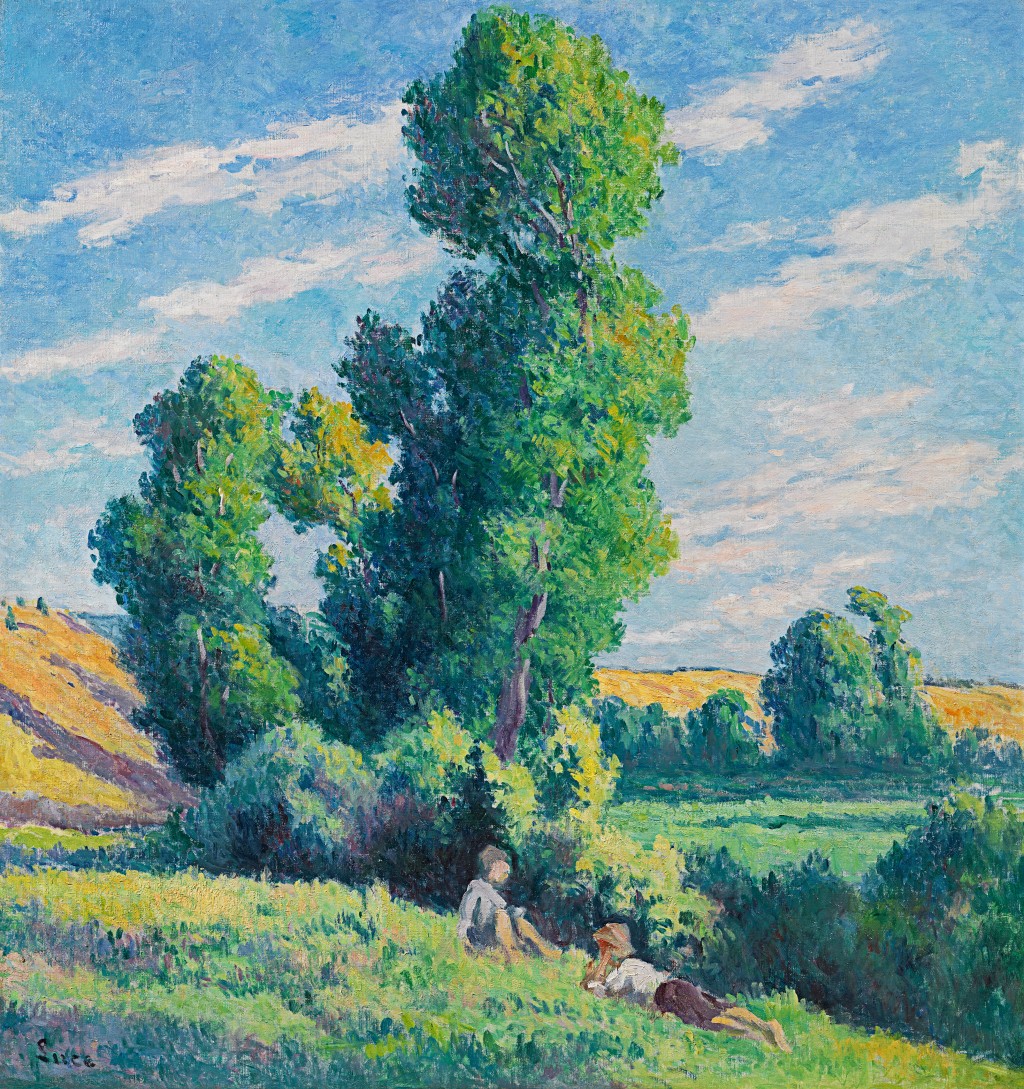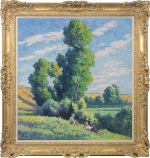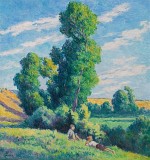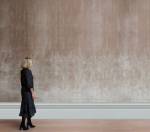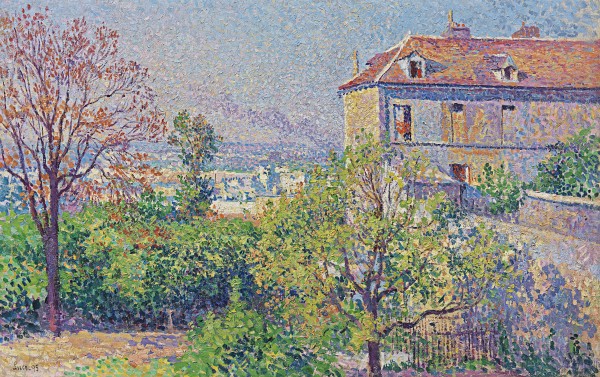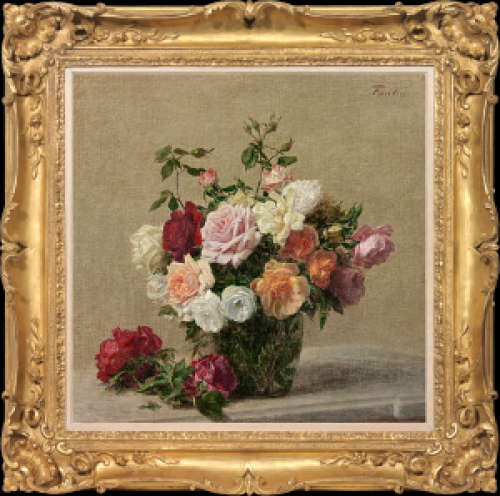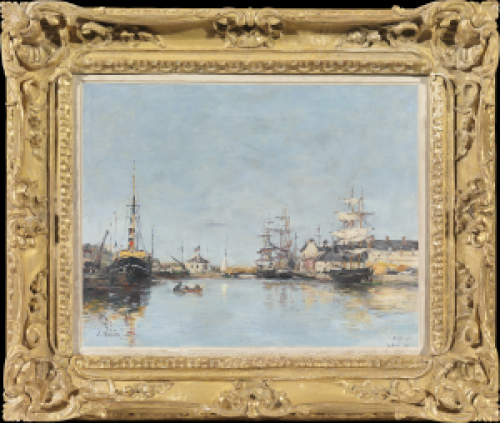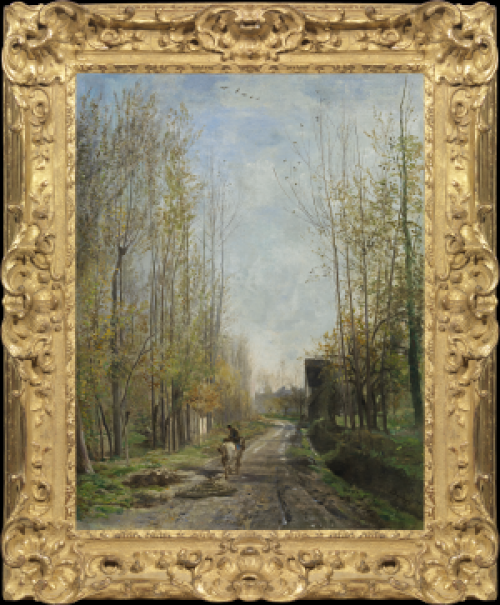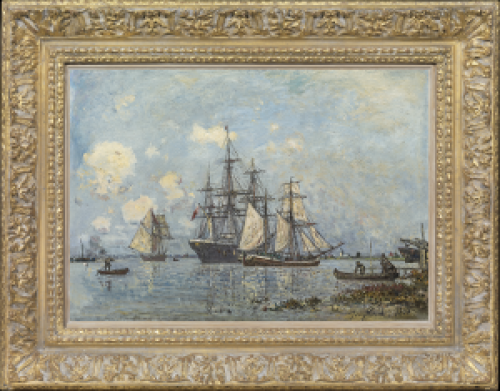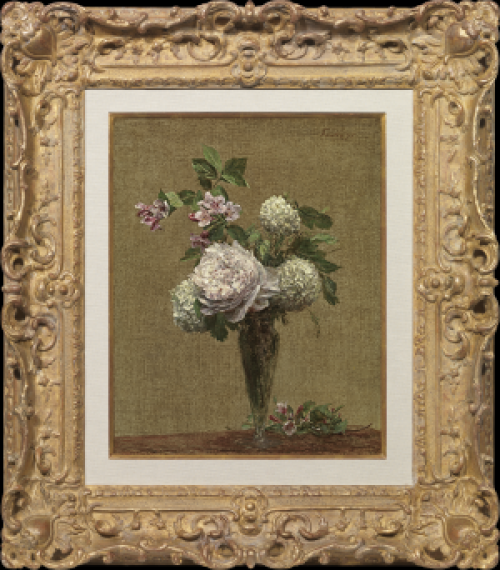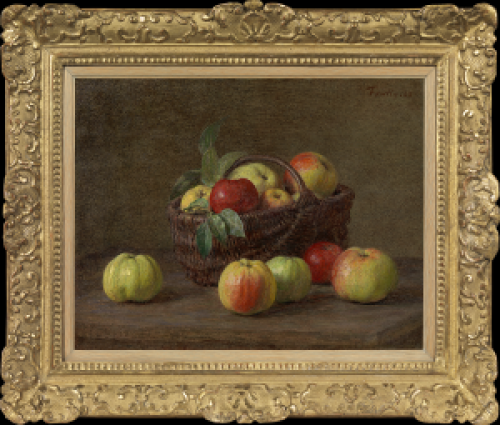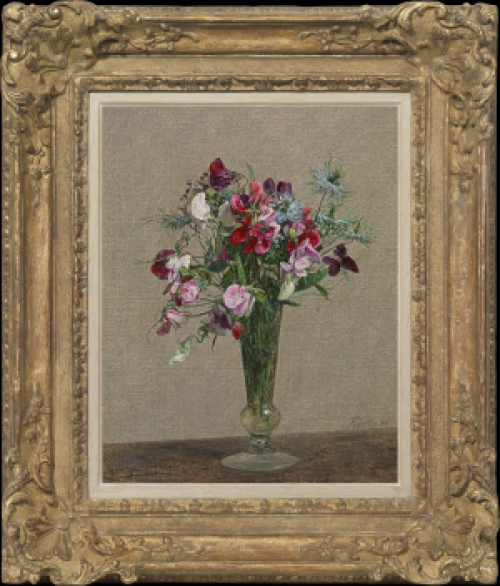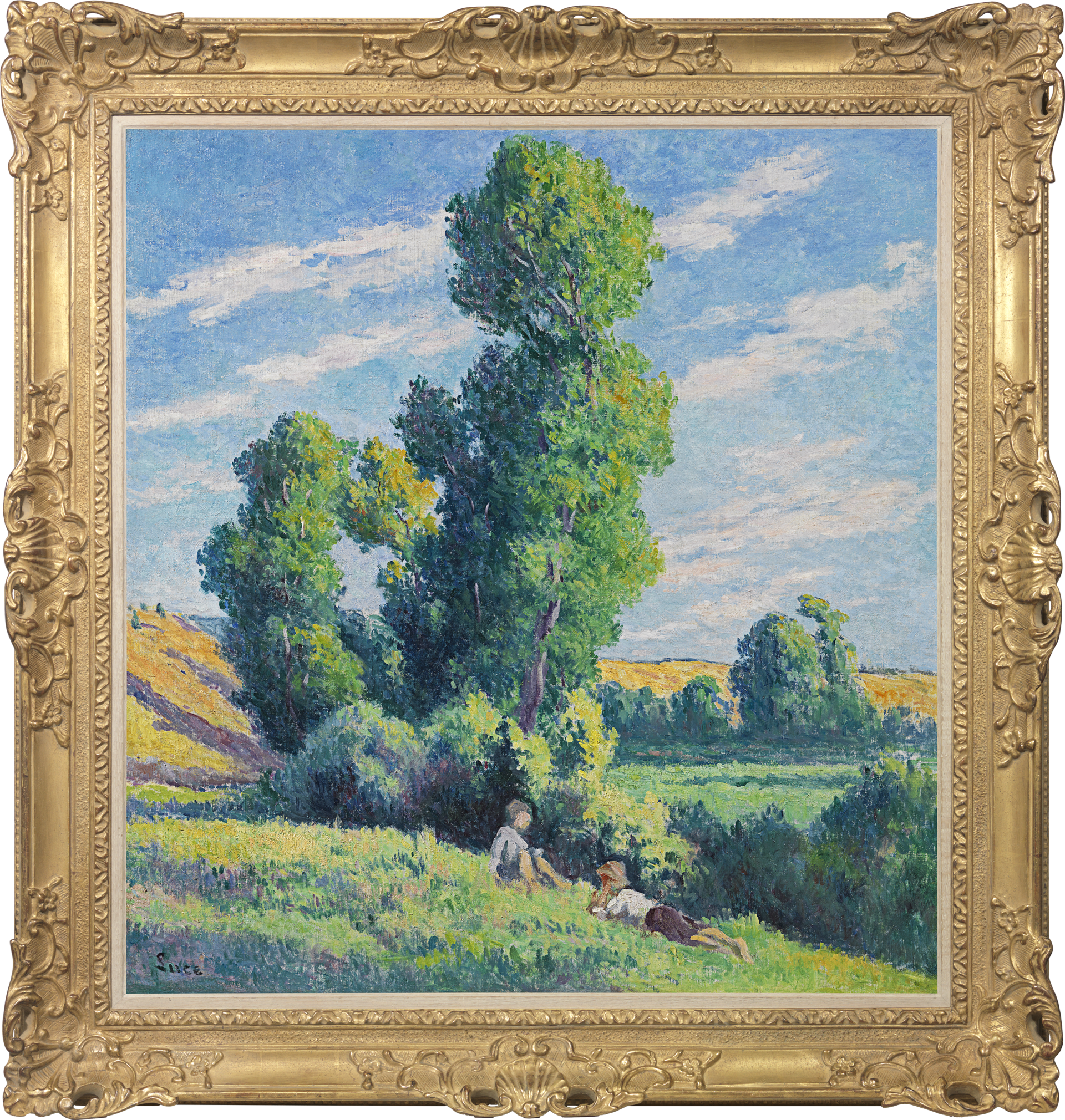MAXIMILIEN LUCE
1858 - Paris - 1941
Ref: CC 141
Environs de Moulineux, le repos sous les arbres
Signed lower left: Luce
Oil on canvas: 33 ½ x 32 ¾ in / 85.1 x 83.2 cm
Frame size: 42 x 40 in / 106.7 x 101.6 cm
Painted circa 1903
Provenance:
Frédéric Luce, son of the artist;
given by Frédéric to Madame C, a childhood friend;
by descent in the family of Mme C, France
Literature:
Jean Bouin-Luce and Denise Bazetoux, Maximilien Luce, catalogue raisonné de l’oeuvre peint, Paris 1986, vol. III, p.163, no.664, illus.
Maximilien Luce was a socially-engaged, Anarchist artist who painted working-class life and Paris street scenes. He also explored landscape, in France and beyond. In the 1890s Luce was influenced by the Divisionist theories of George Seurat (1859-1891) and his friend Paul Signac (1863-1935), but by the early years of the twentieth century had adopted an expressive, highly personal interpretation of Post-Impressionism.
From 1900 Luce and his muse and companion Ambroisine Bouin took holidays in the area around Etampes in the Ile-de-France, staying at Méréville, about fifty miles south-west of Paris. This painting was made in the vicinity of a nearby village, Moulineux. Luce glories in the lush, high summer landscape of northern France, with its meandering streams and gentle hills. Flickering, cross-hatched and dragged brushwork creates a swirl of energy, as do the vivid contrasts of hues. The composition is dominated by a tall poplar soaring into a blue sky flecked with white clouds. The sunny side of the tree is a dense interweaving of yellow-green and yellow brushstrokes, while the shadowed left is composed from touches of deep blue and blue-green. The composition is held in tension by the strong horizontal of fields bleached to a summer gold. At the far left, Luce depicts the golden field striated with the slender, purple shadows of the trees, pushing the power of complementary colours to the limit, in keeping with Post-Impressionist practice.
Two boys lie stretched on the grass, whiling away a delicious holiday afternoon amid the languorous heat and humming insects of la France profonde. Despite its realism and acute observation of the effects of light, Environs de Moulineux lies within a long tradition of French pastoral that goes back to the eighteenth century work of Antoine Watteau and Jean-Honoré Fragonard.
MAXIMILIEN LUCE
1858 - Paris - 1941
Maximilien Luce was born and grew up in working-class Montparnasse, the son of a railway clerk. Throughout his career documented the lives and labours of the poor. In 1876 he joined the studio of the wood engraver Eugène Froment, contributing illustrations to L’Illustration and The Graphic. He also attended classes at the Académie Suisse and the studio of Carolus-Duran. At Froment’s Luce became friends with Léo Gausson and Emile-Gustave Péduzzi, painting landscapes with them in Lagny-sur-Marne.
Paul Signac bought Luce’s The toilette from the Salon des Artistes Indépendents in 1887. Luce exhibited at the Indépendents annually and became its President in 1935. He was influenced by the Divisionism of Seurat and Signac, although not as rigidly allied to its precepts. He painted the bustle of the Latin Quarter, the panoramas of Paris seen from Montmartre and many views of the Pont Neuf. Luce travelled to London with Camille Pissarro and Saint-Tropez with Signac in 1892; to Camaret in Brittany in 1893 and from 1895 often to the Borinage, the coal mining district of Belgium. This resulted in a number of impressive paintings of the hard, heroic life of industrial workers, such as Iron foundry, 1899 (Rijksmuseum Kröller-Müller, Otterlo). In later life Luce divided his time between Paris and Rolleboise, a village on the Seine north-west of the capital.
At the age of thirteen Luce had witnessed the brutal suppression of the Commune in its Montmartre heartland, an event commemorated in Paris street in May 1871, 1905 (Musée d’Orsay, Paris). He was a lifelong Anarchist, contributing works to left-wing publications such as La Révolte. In 1894 President Sadi-Carnot was assassinated by an Italian Anarchist and Luce spent six weeks in the Mazas Prison in Paris, along with the critic Félix Fénéon, as a suspected agitator. He documented his experience of prison life with a set of lithographs, entitled Mazas (1894).
Luce met Ambroisine Bouin in 1893. She became his muse and eventually his wife (in 1940), often appearing nude or employed in domestic tasks in his work. Luce and Ambroisine had two children and adopted Ambroisine’s nephew, Georges Bouin. Luce’s later work is Neo-Impressionist rather than Divisionist in style. He died in Paris in 1941.
The work of Maximilien Luce is represented in the Musée d’Orsay, Paris; the Petit Palais, Geneva; the Rijksmuseum Kröller-Müller, Otterlo; the National Gallery of Art, Washington DC; Cleveland Museum of Art; the Museum of Fine Arts, Boston and the Thyssen-Bornemisza Museum, Madrid.


